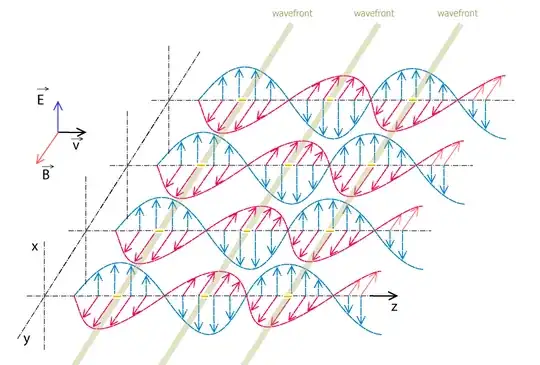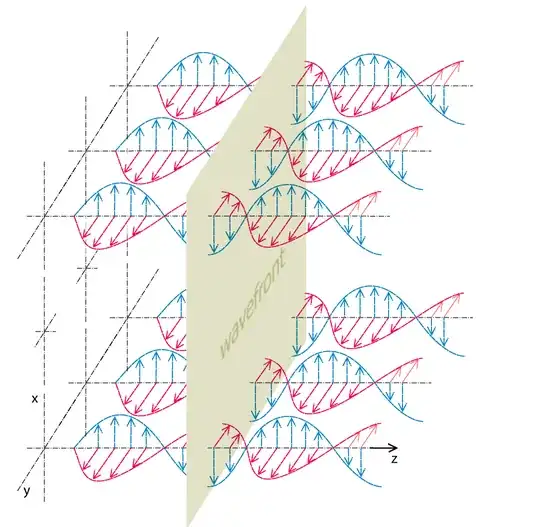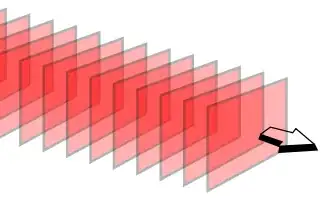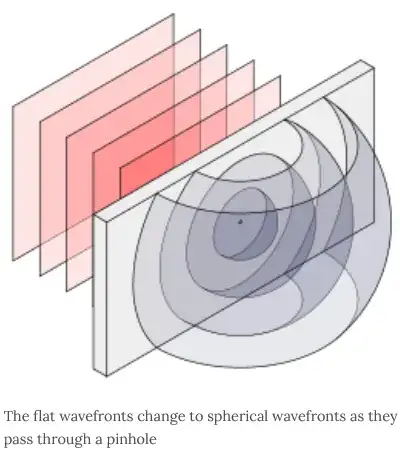Huygens’s principle states that every point on a wave front is a source of wavelets that spread out in the forward direction at the same speed as the wave itself. The new wave front is tangent to all of the wavelets. From
I'm having a hard time understanding what a 'wave front' means for a spherical wave. I can understand it for transverse waves as the peaks of it but how do we have a 'notion' of peak for a spherical wave?
Secondly 'oscillations' of what is involved in classifying wave front? I've read this answer that Huygens's is about propagation and not emission but I can't understand what exactly is being propagated. Would it be correct to think that it's photons?
Clarification on the classifying point: In sound waves we say that it is density of the air which we use to classify wave fronts but what exactly is the physical quantity in classifying wave fronts for electromagnetic waves?




